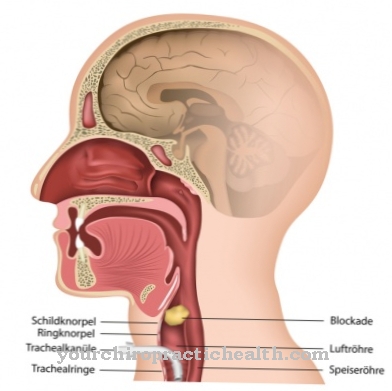The photodynamic therapy is a comparatively gentle and at the same time effective treatment method for superficial skin tumors. With the help of so-called photosensitizers and light waves, substances are released in the organism that specifically lead to cell death of the diseased cells.
What is photodynamic therapy?

As photodynamic therapy (PDT) is a diagnostic and non-invasive therapeutic method used in the treatment of superficial skin tumors (carcinoma in situ).
The procedure is an effective and gentle alternative to conventional invasive surgical interventions. Photodynamic therapy usually leads to better cosmetic-aesthetic results with significantly less or no scarring. Characteristic clinical pictures that are associated with photodynamically treatable tumors are Bowen's disease, actinic keratoses and the basaliomas (semimalignant skin tumor) most frequently diagnosed in Central Europe.
In addition, viral skin changes (including warts) as well as moist forms of age-related macular degeneration (AMD) to obliterate abnormal blood vessels in the center of the retina can be effectively treated by photodynamic therapy.
Function, effect & goals
The photodynamic therapy is mainly used for superficial skin tumors (e.g. basaliomas) that have penetrated less than 3 mm into the skin and can occur in the context of actinic keratoses or Bowen's disease, among other things.
In addition, the procedure can effectively treat viral changes in the skin (e.g. warts). For this purpose, a special cream is applied topically to the affected skin area and covered light-tight for about 3 hours with the help of an adhesive plaster. The light sensitizer contained in the cream (including Metvix, 5-ALA or delta-aminolevulinic acid) selectively stimulates the pathologically altered skin cells to synthesize protoporphyrin IX, which is a precursor of the organism's own porphyrin.
Porphyrin, in turn, is photoactive and, under the influence of certain light waves, stimulates the biosynthesis of aggressive oxygen radicals (so-called photodynamic effect), which cause the abnormal cells to die. For the most part, this chemical reaction has no influence on healthy cells. Since individual pain levels can vary during the irradiation, a pain-relieving medication is administered before therapy begins and the area of skin to be treated is cooled with the aid of a cold air device during the procedure.
After the treatment, the irradiated skin areas should be cooled and greasy creams or ointments should be avoided. An antibiotic gel can be applied to calm and relieve pain. Depending on the severity and stage of the skin tumor, the therapy may have to be repeated. In the case of pronounced actinic keratosis, for example, the photodynamic therapy should be repeated after about 4 weeks.
In addition, six-monthly check-ups are recommended for the early diagnosis of recurrences. The photodynamic effect described can also be used for diagnostic purposes (photodynamic diagnostics or fluorescence diagnostics). After the affected skin areas have been treated with the photosensitizer, the porphyrin that has selectively accumulated in the pathologically changed cells can be made visible with the help of a Wood lamp (black light). This enables an early diagnosis as well as a detailed identification and assessment of the diseased skin areas, which is particularly important in the case of the often scattered forms of actinic keratosis.
For some time now, photodynamic therapy has also been used for wet forms of age-related macular degeneration. In the run-up to the laser treatment, the light-sensitive dye (including Verteporfin) is infused into the arm vein. The damaged blood vessels in the eye that have accumulated with the photosensitizer can be specifically obliterated by the subsequent irradiation with light waves. Following photodynamic therapy, there is usually an increased sensitivity to light, which makes it necessary to wear dark sunglasses and appropriate protective clothing.
Risks, side effects & dangers
Generally one goes photodynamic therapy only associated with minor risks and side effects. As a rule, after the treatment, extensive reddening and sunburn-like skin irritations can be observed in the area of the treated skin.
These usually subside within a few days. In rare cases, crust formation, oozing skin areas and swellings can also be detected following photodynamic therapy. Encrustations of the skin, like scabs, usually come off automatically after a few days.
In extremely rare cases, photodynamic therapy causes a pigment shift (post-inflammatory hyperpigmentation), which manifests itself in excessive pigmentation (dark discoloration) of the skin. As part of the treatment of age-related macular degeneration, the procedure can cause edema (fluid retention) and other damage to the retina. In addition, a deterioration in vision or blindness as a result of photodynamic therapy cannot be ruled out.

























.jpg)

.jpg)
